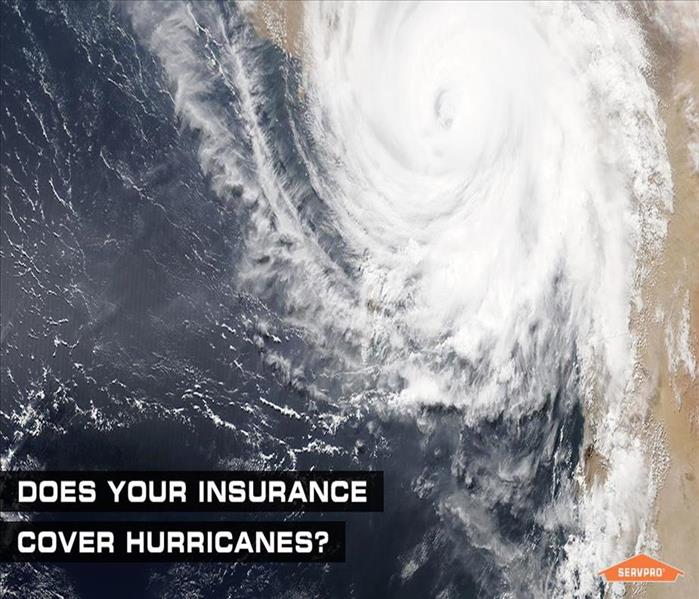Protect Your Cartersville Business From Storm Damage
9/14/2018 (Permalink)
 SERVPRO of Bartow County is an approved vendor for most insurance companies - Give us a call if you suffer storm damages.
SERVPRO of Bartow County is an approved vendor for most insurance companies - Give us a call if you suffer storm damages.
Protecting yourself today means having sources for information, preparing your business, developing an emergency communications plan, and knowing what to do when a flood is approaching your home or business. Taking action today can save lives and property.
Know Your Flood Risk
Learn whether you live, work, or travel through areas that are prone to flooding. To help communities understand their risk of flooding, the Federal Emergency Management Agency (FEMA) creates flood maps (Flood Insurance Rate Maps, or FIRMs) to show the locations of high-risk, moderate-tolow risk, and undetermined risk areas. To check your flood risk, enter your address at www.floodsmart.gov/floodsmart/pages/flooding_flood_risks/defining_ flood_risks.jsp. According to the National Flood Insurance Program (NFIP), more than 25 percent of all flood claims each year come from homes outside areas at high risk for flooding. To participate in the NFIP, local communities must adopt floodplain management regulations that meet or exceed its minimum requirements.
Know How To Stay Informed
Receiving timely information about weather conditions or other emergency events can make all the difference in knowing when to take action to be safe.
- Monitor the weather reports provided by your local news media.
- Many communities have text or email alerting systems for emergency notifications. To find out what alerts are available in your area, do an Internet search with your town, city, or county name and the word “alerts.”
- Consider buying a NOAA Weather Radio (NWR) All Hazards receiver, which receives broadcast alerts directly from NWS. You can purchase these at many retail outlets, such as electronics and big box stores, or online. Some NWR receivers are designed to work with external notification devices with visual and vibrating alerts for people who are deaf or hard of hearing.
- Think about how you will stay informed if there is a power outage. Have extra batteries for a battery-operated radio and your cell phone. Consider having a hand crank radio or cell phone charger.
- You can use USGS’s WaterAlert system to receive texts or email messages when a stream in your area is rising to flood level. Know your evacuation routes; plan your transportation and a place to stay. The safest way to survive a flood is to evacuate the area if advised to leave. To ensure that you will be able to act quickly should the need arise, you need to plan ahead.
- Know your community’s local flood evacuation plan and identify several escape routes for your location if roads are blocked; include plans to evacuate people with disabilities and others with access and functional needs, pets, service animals, and livestock.
- If you will evacuate by car, keep your car fueled and in good condition. Keep emergency supplies and a change of clothes in your car.
- If you will need to share transportation, make arrangements now. If you will need to use public transportation, including paratransit, contact your local government emergency management agency to ask how an evacuation will work, how you will get current information during an evacuation, the location of staging areas, and other information.
- If you need to relocate for an extended period of time, identify a place away from home now where you could go if you had to leave. Consider family or friends who live outside of the local area.
- If you expect to go to a shelter after evacuating, download the American Red Cross Shelter Finder app. This app displays open American Red Cross shelters and provides the capacity and current population of each shelter. Visit www.redcross.org/mobile-apps/shelter-finder-app. You can also text SHELTER + your ZIP code to 43362 (4FEMA) to find the nearest shelter in your area.
- If you have pets and plan to go to a shelter, call to inquire whether the shelter can accommodate your pets. Shelters will accept service animals.






 24/7 Emergency Service
24/7 Emergency Service